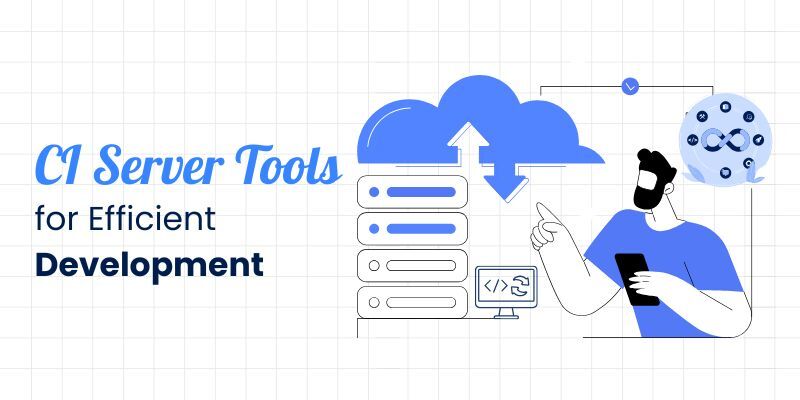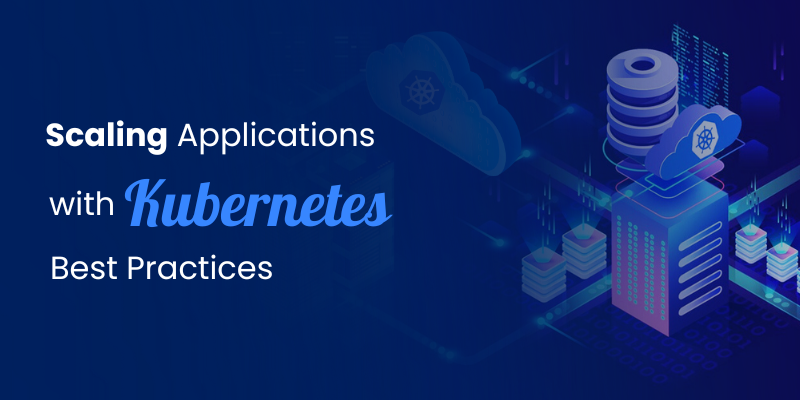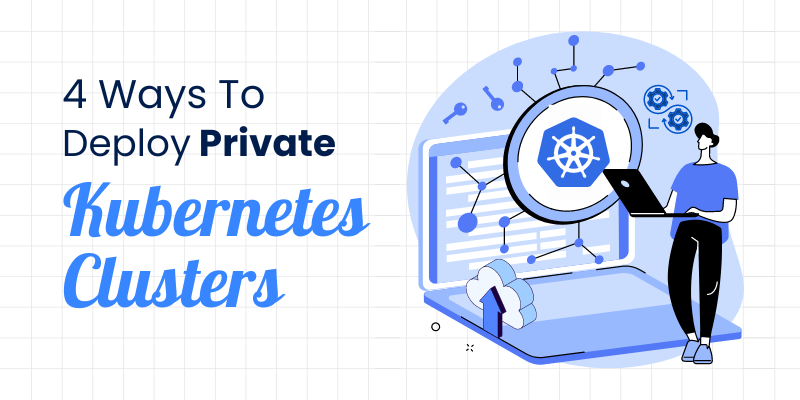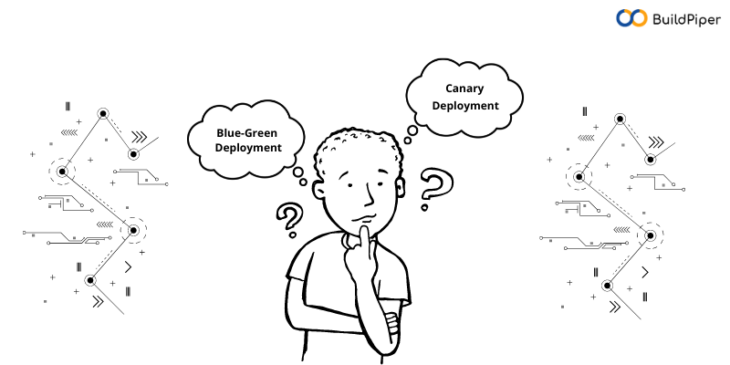
Read here to know which process should your team choose for a smooth and quick product release.
What is Canary Deployment?
Canary deployment is a technique to reduce the risk of updating software or introducing new changes in the production environment by slowly rolling out the change to a small subset of users before making the software functional for everyone.
Pros
Canary deployments provide the following benefits to businesses.
- Allows enterprises to test in production with real users and use cases.
- Enables comparison of different service versions side by side.
- Cheaper than blue-green deployments because it does not require two production environments.
- DevOps team can rapidly and safely trigger a rollback to a previous version of an application.
Cons
- Scripting a canary release can be complex as manual verification or testing can sometimes become time-consuming.
- Monitoring and instrumentation for testing in production may involve exhaustive research and additional skills & knowledge.
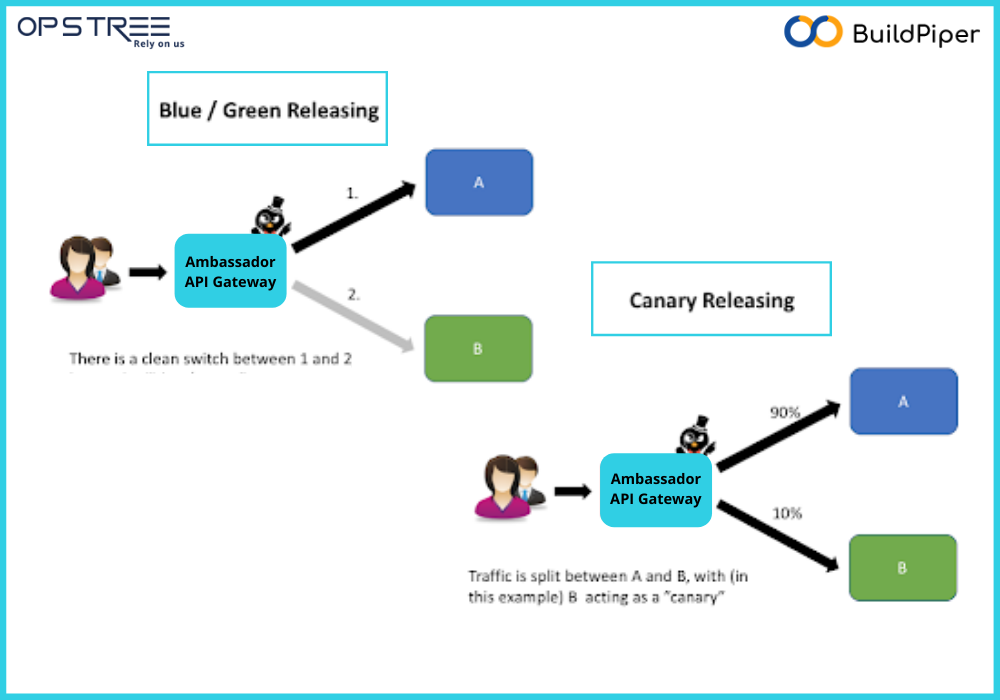
What are Blue/Green Deployments?
Blue/green deployment is a deployment technique to release new code into the production environment. Blue/green deployments make use of two identical production environments — one of these is active and the other environment is set to idle. New updates are pushed to the active environment where it is monitored for bugs while the idle environment serves as a backup where traffic can be routed in case an error occurs.
Pros
- Simple, fast, easy to understand and implement.
- Rollback is straightforward as teams need to simply flip traffic back to the old environment in case any issue arises.
- Blue-green deployments are not as risky and vulnerable to losses as compared to other deployment strategies.
Cons
- Cost is the major drawback to blue-green deployments. Replicating a production environment can be complex and expensive, especially when teams have to work with microservices.
- Quality assurance and user acceptance testing may not be enough to identify all of the anomalies or regressions.
- An outage or issue can pose a large-scale business impact before a rollback is triggered.
Canary Deployment vs Blue/Green Deployment
Canary deployment vs Blue-green deployment is a trending topic of discussion among tech leaders and business strategists these days. If you’re wondering which deployment should your team go for, then this brief information on Canary deployment vs Blue-green can be of great help.
Blue/green deployments allow DevOps teams to test a new release with a production-quality environment before they push it live. This way blue-green deployments enable the IT teams to switch all users over to a new release at once versus the canary deployment where there are staged releases.
But, as stated earlier Blue-green deployments require a large budget to accommodate large infrastructure requirements as this strategy requires IT organizations to maintain two identical hosting environments. However, businesses with limited resources or having applications that are modular and configuration-driven can opt for canary deployment.
While Blue/green deployments are used to eliminate downtime, Canary deployments are used to test a new feature in a production environment with minimal risk.
The argument on Canary deployment vs blue-green is never-ending. No matter, your team goes for Canary deployment or Blue-green, both of these deployment strategies require some pre-planning and thought about the architecture of your business applications and environments before you choose one.
If you plan to execute Canary deployment, the situation might become complicated, especially when Microservices are involved. The whole picture may look dull at first, but with a help of a robust platform such as BuildPiper, you can add colours to it.
BuildPiper is a DevSecOps platform that can help DevOps team with successful implementation of the Microservices along with Kubernetes management and CI/CD pipeline set up with complete observability, compliance and security.
Read more on Canary Deployment, its different stages and much more, here in this blog!
“A Detailed Guide to Canary Deployments”
Buildpiper is an End to End Microservices Delivery Platform.

